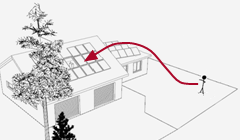Navigation in rendered model
A navigation action changes the spatial relationship between the viewer and the viewed object. In this way, you define the desired
Important!
Navigation is possible if one of the  standard render modes (OpenGL Render) is activated. In case of the
standard render modes (OpenGL Render) is activated. In case of the  advanced render modes, the perspective is locked. In order to navigate, switch to a different render mode.
advanced render modes, the perspective is locked. In order to navigate, switch to a different render mode.
Functions

Back to last perspective DDS-CAD saves the sequence of perspectives. With this function you will return to each previous perspective.

Return to basis viewpoint DDS-CAD considers the entire model as a square, of which the center is determined and used as a focus point. The model is located at the same height as the focus point. The viewer looks at an angle of 45° on the model. The distance is calculated so that the model is fully visible on the screen.
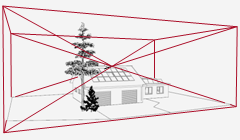

Rotate around model You can have your model revolve around the focus point continuously. Visually, the model rotates on the screen and the view is fixed to the focus point.
[ESC] terminates the function and the model remains in its current position.
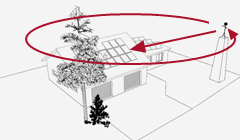

Orbit mode After starting the function DDS-CAD is passive. During navigation actions the viewer moves around a stationary focus point.
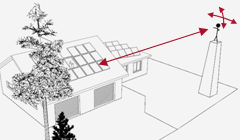

Walk mode After starting the function, the model behaves dynamically. Each mouse movement corresponds to a head movement of the viewer. When moving, the viewer moves horizontally through the model. The height of the viewers position does not change.
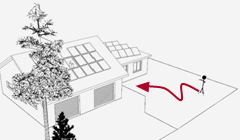

Fly mode After starting the function, the model behaves dynamically. Each mouse movement corresponds to a head movement of the viewer. The viewers flies through the model and follows the movement of the mouse, also in height.
